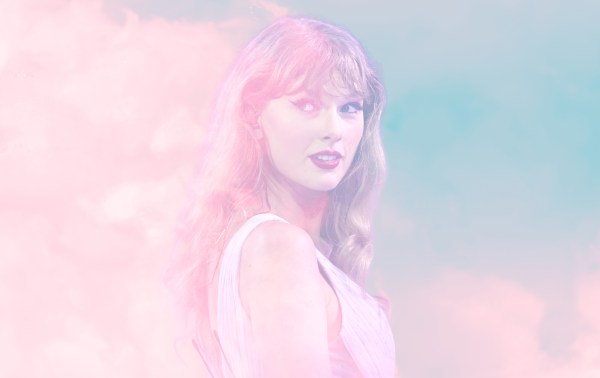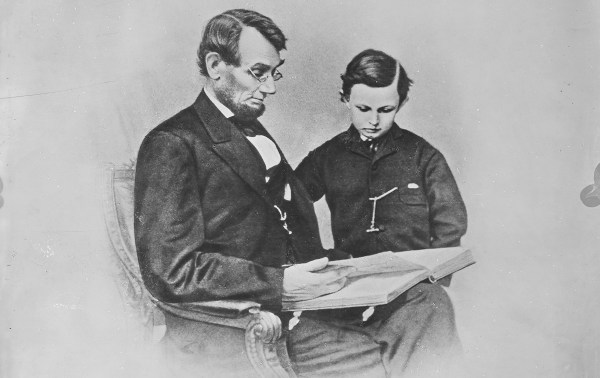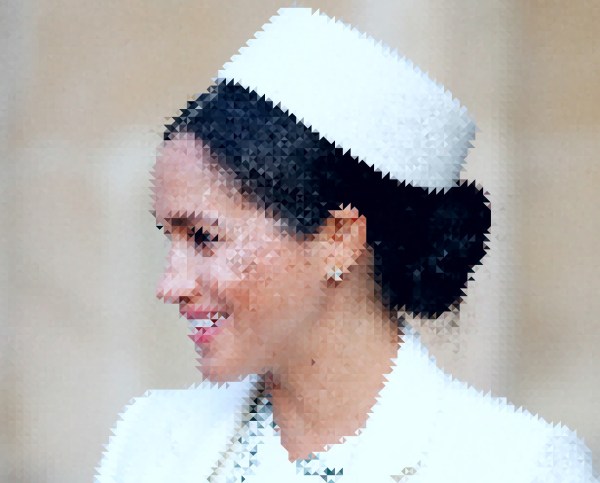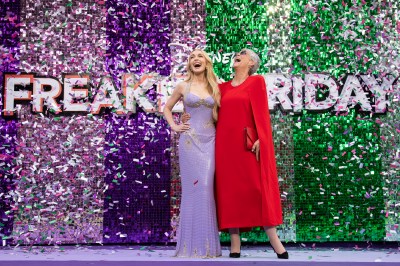Turn any article into a podcast. Upgrade now to start listening.
Premium Members can share articles with friends & family to bypass the paywall.
Being middle-aged has never exactly been considered the “coolest” life stage for women. Even if Regina George’s mom from Mean Girls tried to convince her daughter’s friends, including Lindsay Lohan’s Cady Heron, that she wasn’t “like a regular mom,” but “a cool mom,” they—and the teenagers watching—knew better. This logic held true in 2004 when the movie came out. It holds true now, too. For those of us in this chapter of life (that’s Lohan now, and me), slipping into pink Juicy Couture sweats and serving mocktails doesn’t fool anyone—there’s still no such thing as a cool mom.
And yet here’s my harder-to-sell claim: Lindsay Lohan—now in the midst of what Rolling Stone christened as her “Lohanaissance”—might actually be shifting that narrative. The once-freckle-faced redhead adored in The Parent Trap and rooted for in Mean Girls has staged a comeback that makes middle age feel, if not “fetch,” at least a smidge cooler than it did back in 2003, when her Freaky Friday hit theaters. And I suspect that's why this fall’s Freakier Friday is topping charts—Lohan’s own comeback is the real box office draw.
Travel back with me to 2006, the nadir of the paparazzi era. Perez Hilton and TMZ ruled the landscape. Paris Hilton, the hotel heiress turned reality-TV star—and no relation to Perez—was their crown jewel: famous simply for being famous, her last name enough to guarantee a headline. Perez, with his neon doodles and cruel captions, turned young stars into punch lines (he dubbed Lohan “Blowhan” for her rumored cocaine use—obviously hilarious, right?). TMZ, with its paid tips and grainy ambush videos, transformed young people’s breakdowns into “breaking news.” America ate it up. Maybe not you, dear reader—but many of us (myself included) sat at our bulky desktops, refreshing Perez’s site between classes or work shifts. Together, they created a machine that monetized humiliation as entertainment.
And more often than not, that humiliation was Lohan’s. In 2009, Us Weekly ran a cover of her with the caption: “I am so alone.” Around the same time, Cosmopolitan assured readers that “Lindsay is devastated but not suicidal since break-up and restraining order.” Necklaces stolen, DUIs, car chases down Santa Monica Boulevard, stints in rehab—her downturn from Disney child star to tabloid trainwreck played out in courts and across our screens.
Unlike Paris Hilton, whose generational wealth and family connections cushioned her every fall, Lohan had none of that. We all knew her family life was troubled. Her father, an alcoholic who abused her mother, was in and out of jail, a story the tabloids relished—and that she herself poured into her 2005 single “Confessions of a Broken Heart (Daughter to Father).” Her fame wasn’t built on inheritance: It was her labor, her face, her childhood that paid the bills. That made her rise more fragile, her collapse more brutal, and her story far more relatable to an American public familiar with financial precarity and family dysfunction.
Perhaps the most iconic image of the era is the November 2006 shot Paris Hilton later dubbed the “Holy Trinity,” though the New York Post splashed another version of it as the “Bimbo Summit.” Hilton, Britney Spears, and Lohan, shoulder-to-shoulder in the front seat of a car after a night out in Beverly Hills: smudged eyeliner, diamonds, laughter, exhaustion. Paris looked untouchable—effortlessly cool-girl chic, the kind of it-girl who never seemed to sweat beneath a million popping flashbulbs; Britney, flamingo pink lipstick blazing, smiled with pop-star glamour and honey-blonde rebellion. But Lindsay—freckled, rumpled in a black leather jacket—gave off a more girl-next-door vibe than tabloid royalty. She never looked like excess; she looked like one of us, caught in the flashbulbs by accident.
That’s the best part about her comeback. For all the times she stumbled, she always carried a spark of lightness as she pulled herself back together. She seemed on the outside, and on the inside, someone who was not only like the girl next door character in a movie but one who you’d actually want living there—because that girl is more like you and your friends than any other Hollywood “starlet” out there. I still remember a 2009 eHarmony parody commercial where she described herself as “a creative, a bit of a night owl, a workaholic, a shopaholic, and, according to the state of California, an alcoholic.” Filmed at the height of her public troubles, it was self-effacing, sharp, and hilarious in a way only Lohan could pull off.
With this said, Lohan isn’t a comedian—though she’s starred in comedies, she’s acted across genres—but she knows how to play the beat of life just right. Her timing is sharp, both in a script and in the larger drama of her own story. In middle age, she’s traded melodrama for buoyancy. She moved to Dubai a decade ago, married financier Bader Shammas in 2022, and welcomed a son in 2023. Dubai offers her something she never had before: privacy. Photography without consent is illegal there, giving her control over when and how she’s seen. Most importantly, it lets her shield her son from the fate she endured—a youth sold as spectacle.
Middle age is often seen as a negative for women because it makes them invisible. In 2019, Akiko Busch noted in The Atlantic that after 40, women often struggle for roles not because they lack talent, but because society stops seeing them as beautiful and potent. Yet she also states, “Going unrecognized can, paradoxically, help us recognize our place in the larger scheme of things.” Lohan’s life in Dubai embodies this very paradox: Invisibility, for her, seems to offer not exile, but freedom, including a space to remake herself.
This remaking offers an optimistic story for the rest of us women in middle age. All too often, midlife for women is written as tragedy—the genre of decline, of a person with a fatal flaw ruining her life or circumstances determining her fate. Comedy, by contrast, is the genre of survival and renewal: Chaos builds, but it ends in recognition and reconciliation. You see this usually as a genre for the young, or for men for that matter, who have plenty of comic characters and stories at midlife. (Hello, Joel McHale in Community and Jason Sudeikis in Ted Lasso.) Culturally, women around 40 are usually handed that tragic script: the invisible wife abandoned for someone younger, the aging mother consigned to grief, the hysterical woman unraveling under the combined weight of care work, the inevitable onslaught of menopause, and a culture that no longer deems her worthy once her youthful appearance fades. The canon is long—Anna Karenina, Emma Bovary, Revolutionary Road, Terms of Endearment. More recently, Miranda July’s 2024 bestselling “midlife crisis novel” All Fours offered its narrator a road trip of sexcapades in a familiar trajectory: Women blowing up their lives, closing in on diminishment. On death.
Lindsay Lohan offers the counterscript. Instead of midlife crisis, she gives us midlife comic timing. She gives us new life—a glow-up, as they say in the movies. She even jests specifically about her “glow-up” (where have those freckles gone?) in a Verizon ad, leaning into the bit and her new life with a wink and conversational, alluring charm. And her biggest comeback is, fittingly, in a comedy itself: the latest Freaky Friday sequel, where she switches bodies with her teenage daughter, while her mom, played by the hilarious Jamie Lee Curtis, swaps places with Lohan character’s’s soon-to-be stepdaughter. The plot is a little confusing at times, but overall, the movie is sheer delight—packed with nostalgia for those of us who grew up with the original, packed with fresh fun for the next generation. Most importantly, though, Lohan looks like she’s enjoying herself while making it—and that joy, on screen, is the best part of all. The girl who once squeezed into the paparazzi frame at the edge of the “Holy Trinity” photo is now running the show—and this time, the spotlight is all hers.
And this is where we return to Mean Girls. Mrs. George is the punch line in that movie. And the “cool mom” gag has been recycled into endless TikToks. But Lohan, even at her lowest, always knew how to laugh at herself—and now she’s bringing that same comic spark to midlife. In the early 2000s, gossip culture made her the joke. Now the laughter has shifted: She’s in on it, and so are we; and, even more, many of us are raising kids alongside her. For middle-aged women—especially moms—that’s not simply refreshing, it’s a cultural shift worth noticing. Lindsay Lohan is, against all odds, the model of what a “cool mom” can actually be.







Please note that we at The Dispatch hold ourselves, our work, and our commenters to a higher standard than other places on the internet. We welcome comments that foster genuine debate or discussion—including comments critical of us or our work—but responses that include ad hominem attacks on fellow Dispatch members or are intended to stoke fear and anger may be moderated.
With your membership, you only have the ability to comment on The Morning Dispatch articles. Consider upgrading to join the conversation everywhere.